Do you know Nigeria is blessed with the 3rd longest river in Africa, River Niger?
Do you know Nigeria has more large and long rivers apart from the river Niger? Nigeria is blessed with many river bodies ranging from the small ones to the medium and larger ones, which play an important role in the existence and development of communities located and Nigeria as a whole.
Here, we will be discussing 7 of the common rivers in Nigeria and their location.
7 of the Common Rivers In Nigeria and Their Location
Table of Contents
- 1 7 of the Common Rivers In Nigeria and Their Location
- 1.1 Which River Is The Deepest River In Nigeria?
- 1.2 Which State Has The Longest River in Nigeria?
- 1.3 What Are The Major Rivers In Nigeria?
- 1.4 How Many River Basins Do We Have In Nigeria?
- 1.5 Which Authority Is Responsible For River Management in Nigeria?
- 1.6 Where is Blue River in Nigeria?
- 1.7 Where Do Two Rivers Meet In Nigeria?
- 1.8 What is the Difference Between An Ocean And A River?
- 1.9 What is the Difference Between A lake And A River?
- 1.10 Conclusion
Rivers in Nigeria have served as a tourist attractions, transportation, irrigation, and other things to the nation’s inhabitants. Here is the list of the 7 common rivers in Nigeria and their Locations.
1. River Niger
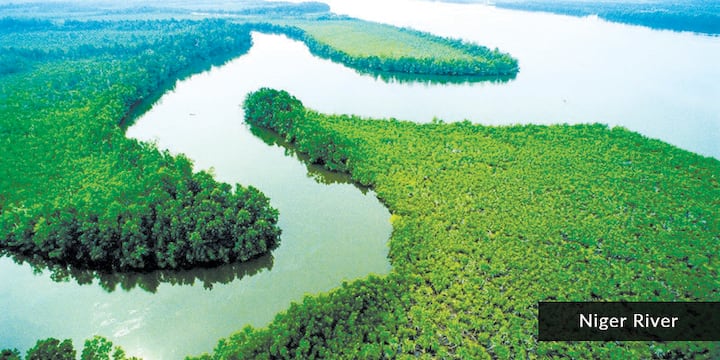
Permit me to start with this award-winning longest river located at the confluence city of Lokoja, Niger state having a length of 4,180km.
It originated from Guinea Highlands in southeastern Guinea near the Sierra Leone border, running in a crescent shape through Mali, Niger, and Benin republic border before flowing into Nigeria through Niger Delta and then through Nigeria, discharging through a massive delta known as the Niger Delta back into the Gulf of Guinea in the Atlantic Ocean.
The river forms a confluence with River Benue at Lokoja and is called different names by Nigerian citizens according to their respective tribes. Yoruba calls it Oya (named after the water goddess), Igbo calls it orimiri( great water), Hausa calls it Kwara, the Nupe calls it Edu, and the Ijaw calls it Toru Beni(the river water).
The water in River Niger is partially regulated through dams in Mali and Nigeria, such as Kainji Dam, Zungeru Dam, Shiroro Dam, and Jebba dam. However, water resources are under pressure due to water extraction for irrigation purposes.
2. River Benue
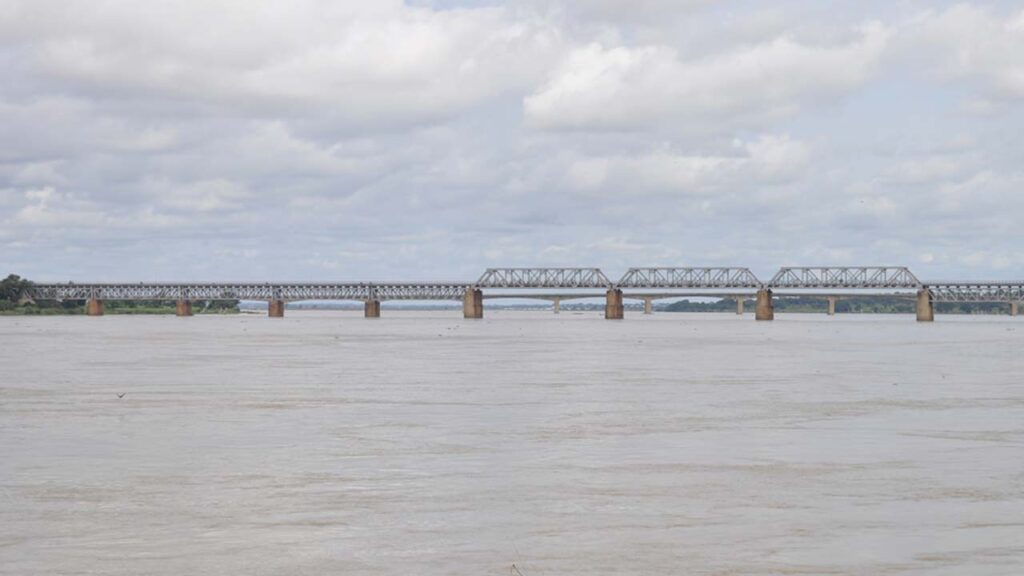
River Benue is the tributary to the Niger river as they meet together at Lokoja, giving the city a slogan;” the confluence city.”However, river Benue exceeds the river Nigeria by volume at the confluence and was flooded in October 2012
The river is the second longest in Nigeria, with a basin size of 319,000 km2 and 1,400 km. It rises from the Adamawa Plateau of northern Cameroon, from where it flows west, passing through the town of Garoua and Lagdo Reservoir.
The river, after that, flows into Nigeria through the south of the Mandara mountains, moving through Jimeta, Ibi, and Makurdi before meeting the Niger River at Lokoja. It has several tributaries in Cameroon and Nigeria, such as the Faro River, Gongola River, Taraba River, Mayo Kebbi, and Katsina-Ala River.
3. River Imo
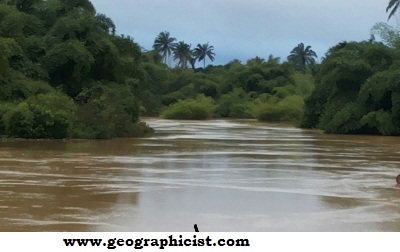
The river is located in Imo, a southeastern state of Nigeria, and flows through IMO, Abia, and river states before flowing into the Atlantic ocean. The river popularly called “Inyang Imoh,” meaning “ River Of wealth” in Akwa Ibom state, is 40 km wide and has River Otamiri and Oramirukwa as its tributaries.
The communities around the river hold an annual festival between May and July in honor of the deity” Alusi,” who they believe is the owner of the rain.
4. River Anambra
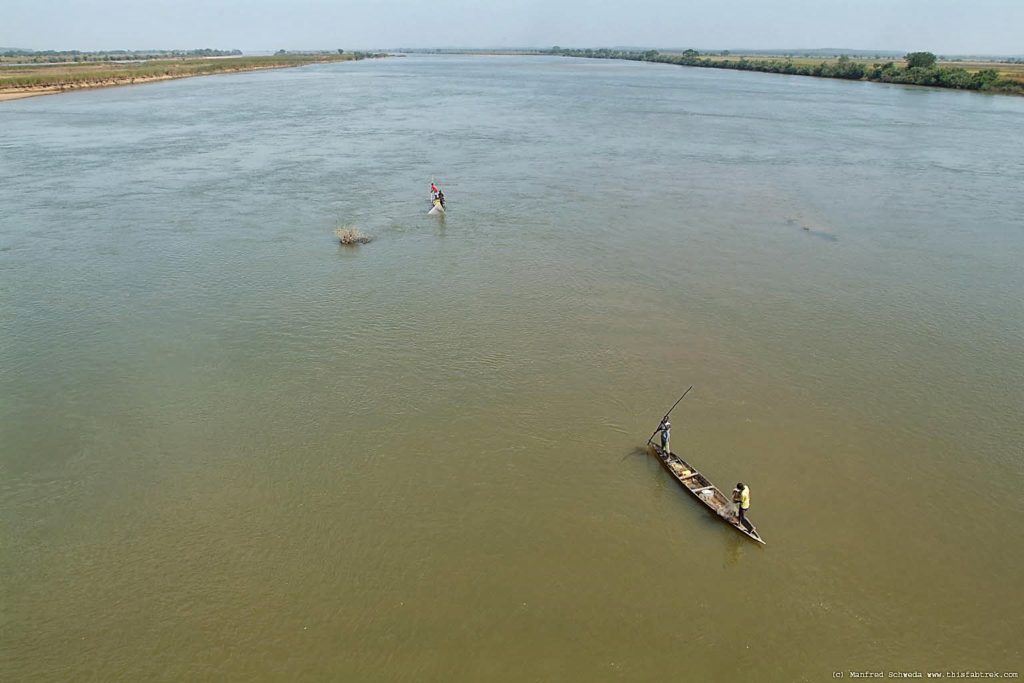
The popularly called Omambala river is located in the state of Anambra, Nigeria, and flows into the Niger river and the Atlantic through different outlets. The river got its name from the goddess’s name and the former community residents from parts of Kogi, Ebonyi, and Enugu worship.
History has it that the river belongs to the goddess whose rivers run from Uzo-uwa-ani to Aguleri, Anam, Nsugbe, and Onicha axis, connecting with the Niger-work/Mgbakili Rivers while flowing back into the Atlantic Ocean, The Ezu and Ezichi rivers also flow into Anambra river at Agbanabo and Oda respectively.
The state got its name from the river being the major tributary of Niger state: thereby calling it the Anam branch of the River Niger” before it was shortened to Anambra, which the state is still being called today. The people of Omambala are held together in unity by the worship of Omambala rivers and other customs.
5. River Ogun
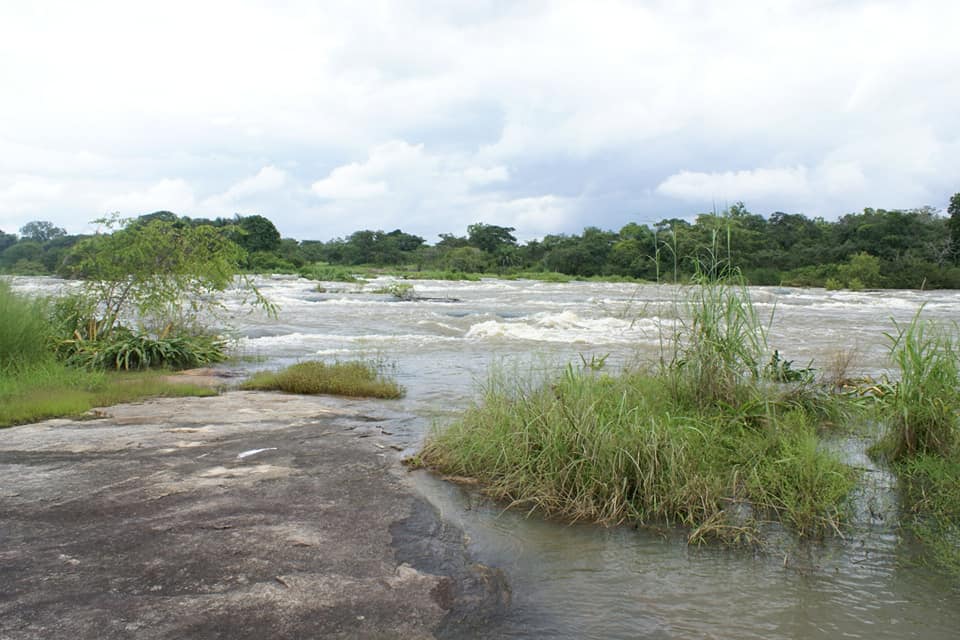
The river began its journey from Sepeteri, Oyo state, near Shaki town, and flows through Ogun state back into Lagos state. The river’s capacity is 690 million cubic meters and is crossed by the Ikere Gorge dam in the Iseyin local government area of Oyo state.
The Old Oyo National Park reservoir is a tourist attraction and flows through the park. The Ofiki river near Shaki and the Oyan river, crossed by the Oyan River Dam, which supplies water to Abeokuta and Lagos, are the tributaries of the Ogun River, with the Ofiki river being the chief tributary.
Yoruba tradition believes Yemoja is the goddess of the Ogun river, and she is worshipped by the people who live along the bank of the river from the origin to where it flows into the Lagoon. It serves as a drain for organic wastes from abattoirs around the river and once served as a source of transportation for traders with goods between Abeokuta and Lagos.
6. River Osun
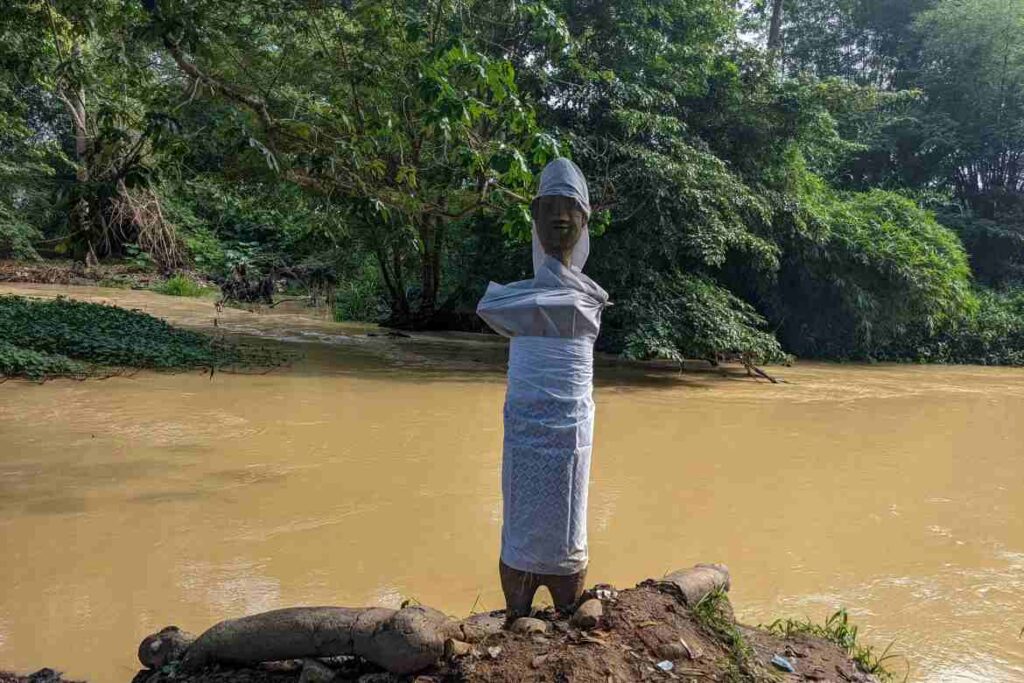
The river is a sacred and reserved one that is always kept clean as it is believed that the river came into existence due to some frightened or angered women turning into flowing waters after some traumatic event.
Osun river, located at Oshogbo, the capital of Osun state, is named after Osun, the wife of Sango(the god of thunder), a popular Orisha of the Yoruba land, and is worshipped annually in August at the Osun shrine located beside the Osun river. The festival is popular as it draws people from the diaspora home and has become a tourist attraction.
The rivers flow southwards into the southwest part of Nigeria into the Lagos Lagoon and the Atlantic Gulf of Guinea.
7. Kaduna River
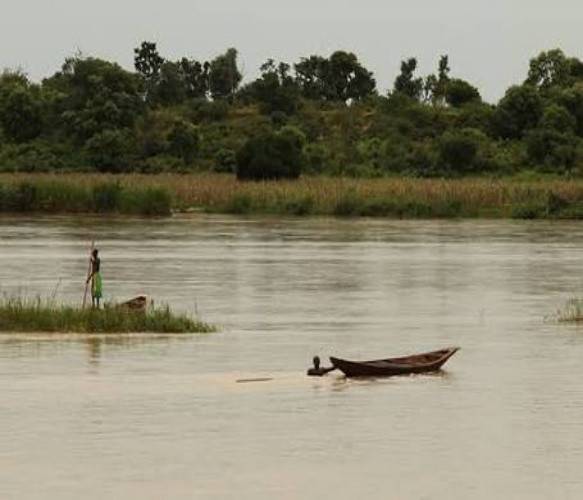
It is one of the major tributaries of the Niger River and flows 550 kilometers through the country. The river is located in Kaduna and rises from the Plateau of the Jos plateau,29 km southwest of Jos town, flowing through Kaduna state, into Kaduna( the capital), and flows into the river Niger in Niger state.
The state got its name from the river Kaduna, which got its name from the existence of crocodiles in the river and its surroundings. Kaduna is the Hausa translation for “crocodile. “
Which River Is The Deepest River In Nigeria?
River Ethiope of delta state is the deepest inland waterway in Nigeria and Africa, as it is said to be 50 km deep. The river originates from the Umuaja community and flows through other rivers before flowing back into the Sapele River.
Which State Has The Longest River in Nigeria?
The Niger state (Niger delta region) has the longest and largest river in Nigeria, the longest river in West Africa, and the 3rd largest in Africa, River Niger.
What Are The Major Rivers In Nigeria?
The Niger and Benue rivers are the two major rivers in Nigeria, as other sub-major(large rivers) or minor rivers find their source or are interlinked with the rivers.
How Many River Basins Do We Have In Nigeria?
River basins are areas drained by a river and its tributaries, and there are about 11 river basins in Nigeria which include;
- Sokoto Rima Basin
- Lake Chad Basin
- Cross River Basin
- Hadejia Jema’are Basin
- Niger Delta Basin
- Niger Basin
- Lower Benue Basin
- Upper Benue Basin
- Anambra Imo Basin.
- Benin Owena River Basin
- Ogun Osun River Basin
Which Authority Is Responsible For River Management in Nigeria?
The River Basin Development Authorities in Nigeria are government agencies responsible for managing water resources for agriculture and other uses.
Where is Blue River in Nigeria?
The River is called Azumini Blue River, located at Aba, Abia state in Nigeria. The stone beds are difficult to view from the top of the river, making it one of the major blue rivers in Nigeria.
It flows into the Imo river before moving to the Atlantic Ocean.
Where Do Two Rivers Meet In Nigeria?
The Niger river and the Benue river meet in a city called Lokoja in the Kogi state of Nigeria; therefore, the state is called the Confluence state.
What is the Difference Between An Ocean And A River?
Rivers are large flowing water that flows into seas or oceans, while oceans are large bodies of water( salt water ) surrounding a continent.
Below are a few of the differences;
| Rivers. | Oceans. |
| It empties itself into the sea and ocean. | They are large water bodies capable of covering two-thirds of the earth. |
| It is a freshwater source. | It is a saltwater source. |
| It connects to a larger body source such as seas | Other small bodies of water are emptied into it. |
| Aquatic species such as fishes and crocodiles are found in the rivers. | Octopuses, sharks, and other large aquatic animals are found there. |
What is the Difference Between A lake And A River?
Lakes are large water bodies surrounded by land on all sides, while rivers are large flowing water that flows into seas or oceans.
Here are a few of the differences;
| Lake | River |
| Lakes are stagnant water bodies. | It empties itself into the sea and ocean |
| They can either be natural or man-made. | They are naturally made. |
| Lake does not connect to other body sources as it is stagnant. | It connects to a larger body source, such as seas. |
| Smaller aquatic species, such as fish and ducks, are found in lakes. | Aquatic species such as fishes and crocodiles are found in the rivers. |
Conclusion
Rivers are one of the pivot points of development in a nation as it has many uses, including safe drinking water, electricity generation, irrigation, agricultural purposes, transportation mode, habitat for aquatic species, and tourism purposes.
Therefore, they should be kept clean by not desecrating them with dirt, human waste, animal waste, or bathing.
